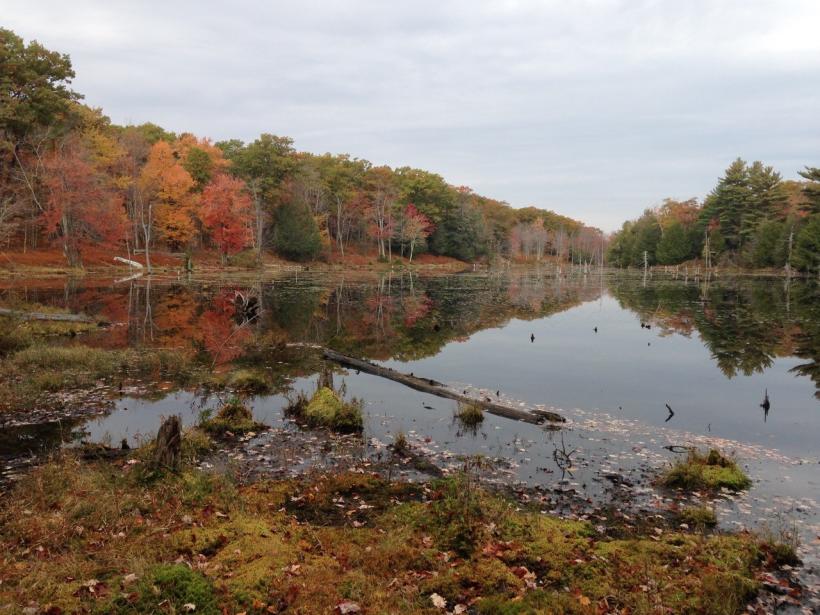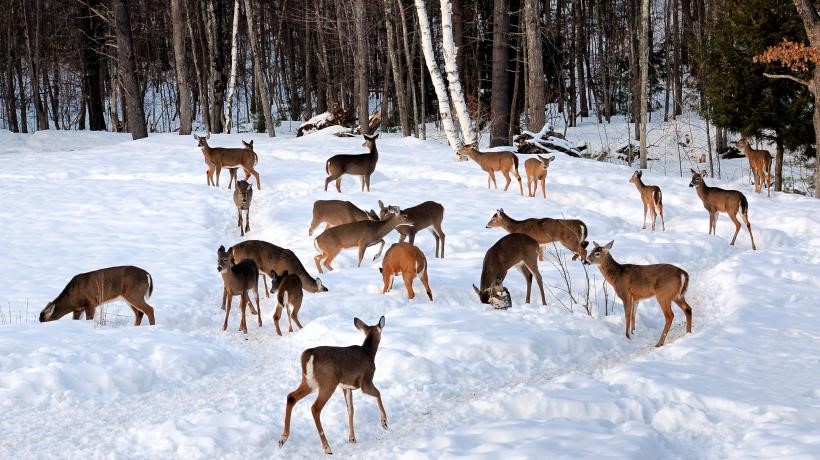The deer season preliminary tallies are now available. We should keep in mind that data cards from some physical check stations are still being entered so the numbers will most likely change, said Marion E. Larson, Chief, Information & Education, MA Division of Fisheries and Wildlife. With the information currently in hand, this is the second highest deer harvest record after the 2018 harvest of 14,516 (2019 harvest: 13,891. As in the past, the complete breakout of numbers and a summary will not be complete until spring.
Season __2020 _______ 2019__________
Youth Deer Hunt 120 89
Paraplegic Hunt: 2 5
Archery: 6,552 6,149
Shotgun: 4,855 4,954
Primitive Arms: 2,802 2,694
State Prelim Total: 14,331 13,891
Total statewide harvest beginning in 2015 and ending with 2020 were as follows: 10,142, 12,233, 13,255, 14,513, 13,891and this year’s 14,331.
MassWildlife feels that while total harvest by zone can be informative, it doesn’t provide the complete picture. Thus, it is important to assess harvest data and monitor trends by Wildlife Management Zone. Total harvest is influenced by deer density and the number of antlerless deer permits that MassWildlife allocates in each zone, as well as annual changes in hunter effort, harvest-rates, success-rates, weather, etc.
David Stainbrook, who was the Deer & Moose Project Leader, moved on to another job. Presumably whoever replaces him will spend the next few months thoroughly analyzing the deer harvest and biological data as well as assessing deer population trends in each zone. The results and recommendations for the 2021 season should take place at the annual deer management review presented at a Fisheries and Wildlife Board meeting in late spring. A complete harvest summary will be posted on the MassWildlife website shortly after the deer review, so check their web site in early summer.
2020 Bear Season Results
The final number for the 2020 bear season numbers was 325, which was another record year. It broke the high of 283 bears taken in 2016. Both the September and November seasons were also record high numbers.
Season Harvest Numbers
September 236
November 57
December 32
Statewide total 325
“One of the silver linings with the pandemic is the extraordinary amount of people who tried out new outdoor activities. This is a great opportunity to recruit and retain “newbies” to outdoor activities, from hiking, birding, and photography to boating, fishing and hunting.” said Larson.
Large Conservation Restriction purchased by the Commonwealth

The Baker-Polito Administration recently announced that the Department of Fish and Game (DFG) and its Division of Fisheries and Wildlife (MassWildlife) acquired a $3.25 million conservation restriction on 2,038 acres of timberland in Shutesbury, Pelham, and Leverett, Massachusetts.
The property will continue to be owned and maintained by W.D. Cowls, Inc. of North Amherst. The conservation restriction, permanently protects the property which is made up of several large forested parcels. The acquisition will conserve critical wildlife habitat, safeguard water resources, and ensure continued public access to the property for hunting, fishing, hiking, wildlife watching, and other outdoor recreation. This major land protection project was made possible through a partnership with the DFG, Kestrel Land Trust, W.D. Cowls, and the federal Forest Legacy Program.
More than 95 percent of the Walter Cowls Jones Working Forest, as the property will be called, is identified as Core Habitat or Critical Natural Landscape by MassWildlife’s Natural Heritage and Endangered Species Program and is essential for ensuring the long-term survival of rare and common wildlife. Two reptiles listed under MESA will benefit from the conservation of this property, as will forest birds like the scarlet tanager, blackburnian warbler, and Canada warbler. On the property are also white-tailed deer, wild turkey, porcupine, snowshoe hare, and ruffed grouse. This sizeable land acquisition benefits mammals with large home ranges such as black bear, moose, and bobcats. The area also includes headwater tributaries that are valuable habitat to coldwater aquatic wildlife (such as trout).
The announcement stated that protecting this large block of forested lands will help sequester and store carbon and help mitigate climate change. Parts of the property are near other conservation land including the Quabbin Reservation, Town of Amherst watershed land, Montague Plains Wildlife Management Area, and the Paul C. Jones Working Forest. Connecting large blocks of wildlife habitat provides plants and animals improved ability to adapt to changing climate conditions. Supplementing the 3,486-acre Paul C. Jones Working Forest, it will serve to protect water supplies for Boston and other towns, preserve extensive wildlife habitat and promote continued production of timber. The acquisition adds to the more than 220,000 acres of MassWildlife’s Wildlife Management Areas and Wildlife Conservation Easements conserved statewide
The $3.34 million paid for the conservation restriction is $100,000 less than the appraised value, with public funding coming from the Land and Water Conservation Fund, U.S. Forest Legacy Program and the MA DFG (which will hold the conservation restriction) and private funds raised by Kestrel Land Trust from the John T. and Jane A. Wiederhold Foundation and other philanthropists. The conservation restriction precludes future development, including residences, solar arrays, and cell and wind towers.
Scott Jackson, an extension professor at the Department of Environmental Conservation at the University of Massachusetts Amherst and chair of Kestrel Land Trust’s board of trustees, calls the land some of the most ecologically valuable in the Connecticut River Valley.
“Approximately 90 percent of the land is identified as core habitat or critical natural landscape by the Natural Heritage & Endangered Species Program’s BioMap2 project,” Jackson said. Part of the $1,650-per-acre conservation deal allows W.D. Cowls to maintain forestry operations while providing financing to finish aspects of the Mill District mixed-use development during the COVID-19 economic downturn.
The conservation restriction surrounds three exclusions that are optioned for solar farm development in Shutesbury, where W.D. Cowls already completed a solar development on 30 acres known as the Wheelock Tract.
Massachusetts Duck Stamp Contest

There is still time to enter the Massachusetts Junior Duck Stamp (JDS) contest. Students from kindergarten through grade 12 can submit original artwork for this fun and educational competition. The entry deadline is February 15, 2021. The process of creating these works of art allows students to appreciate the importance of preserving wetland habitats and the delights and diversity of wildlife. “Even if students do not enter the competition, science and art teachers will value the JDS curriculum as a useful resource,” advises MassWildlife’s Wildlife Education Coordinator, Pam Landry.
The JDS program links the study of wetlands and waterfowl conservation with the creation of original artwork. Students in grades K-12 learn about the habitat requirements of various kinds of ducks and geese and then express their knowledge of the beauty, diversity, and interdependence of these species artistically, by creating a drawing or painting which can be submitted to the JDS art contest. The art is judged in four age group categories in a statewide competition; the entry judged Best of Show moves on to represent Massachusetts in the national JDS competition. Art teachers, science teachers, and parents who home-school can visit the MassWildlife website for an information packet and entry information.
For more information contact Pam Landry at pam.landry@mass.gov.
If we have any local winners, I will gladly include their duck stamp pictures in this column.
Firearms Safety Courses
- Avid Sports will be holding its next Firearms Safety Course on Tuesday January 26 at 5:00 pm at its place at 1201 West Housatonic Street, Pittsfield. The course allows one to apply for a Pistol permit or F.I.D. card. You can either Call 413-997-3600 or stop by Avid Sports for more details or to sign up for the course. Its next Firearms Safety Course will be held on Tuesday February 9 at 5:00.
- Pete’s Gun Shop is offering live fire NRA & Massachusetts State Police Certified LTC Safety Courses. The course consists of one evening of classroom and live shooting separately on a Sunday. They are currently having classes on Tuesday and/or Wednesday evenings at 5:30 PM. The classroom portion is held at Pete’s Gun Shop on 9 Grove Street in Adams. Call the shop at 413-743-0780 to inquire about the availability of a seat. They are presently scheduling March classes.
These are smaller classes due to the state’s limit on gathering size, so they are filling up VERY fast. A non-refundable deposit is required to reserve your seat at the time of registration.














